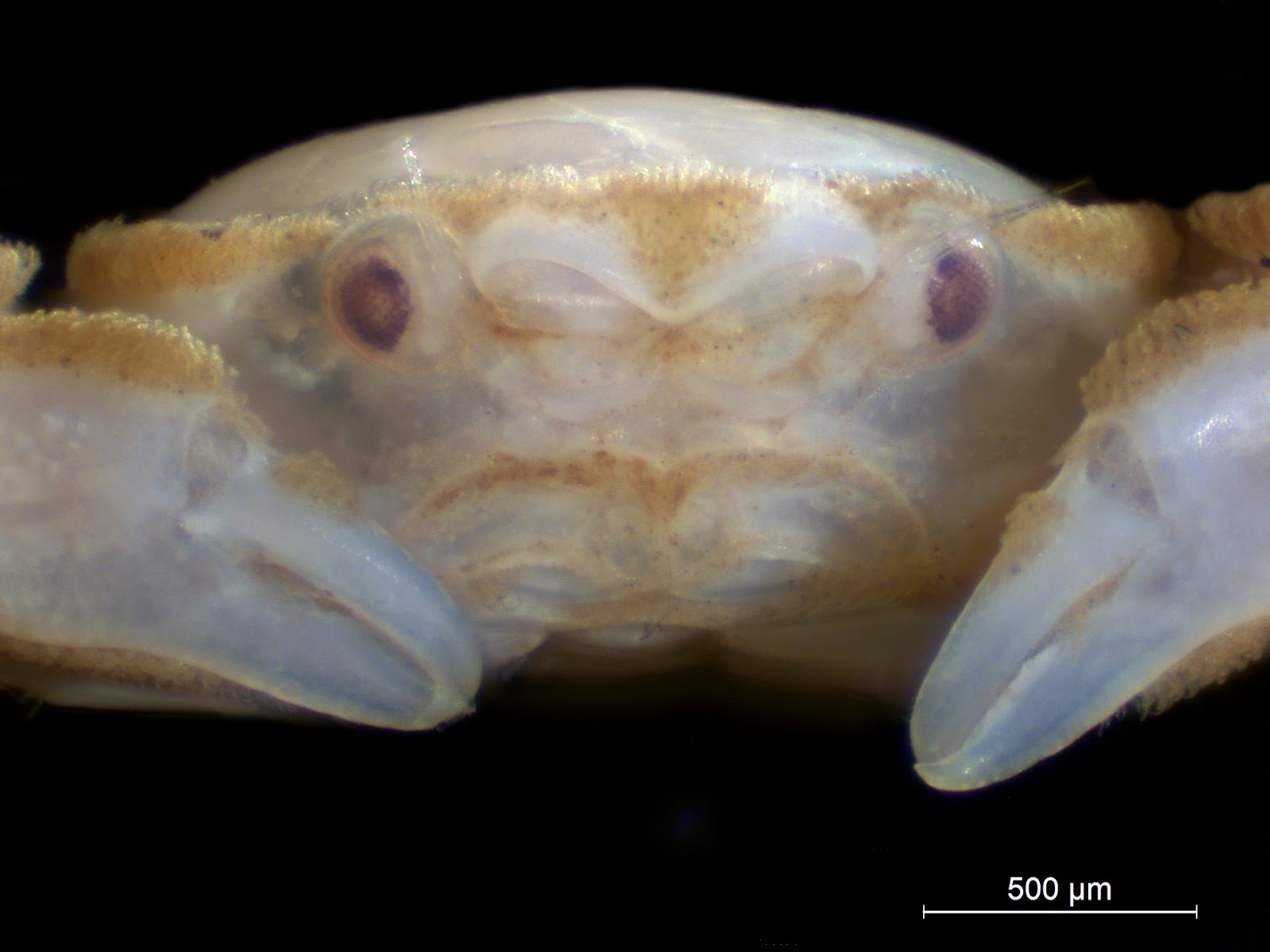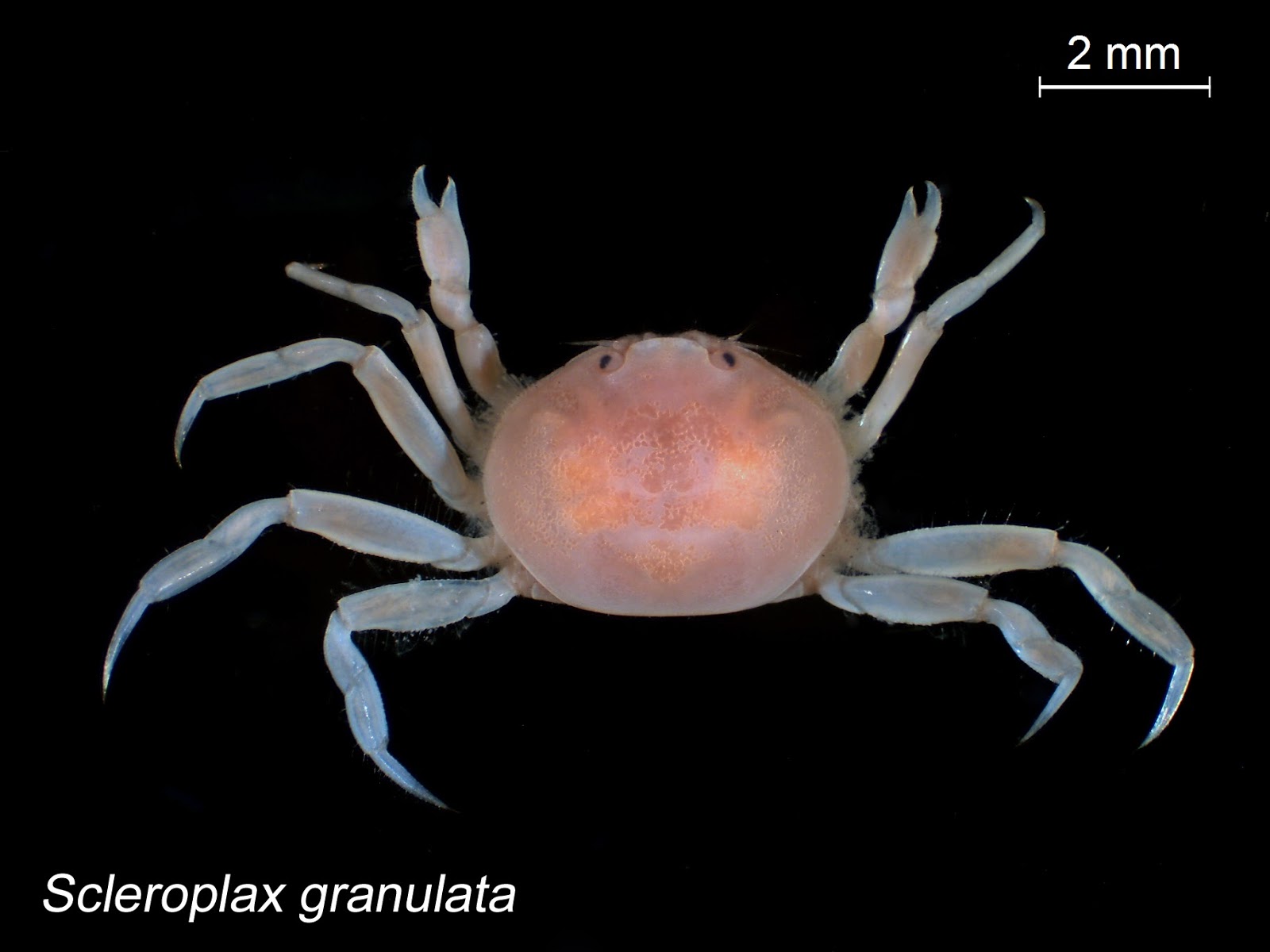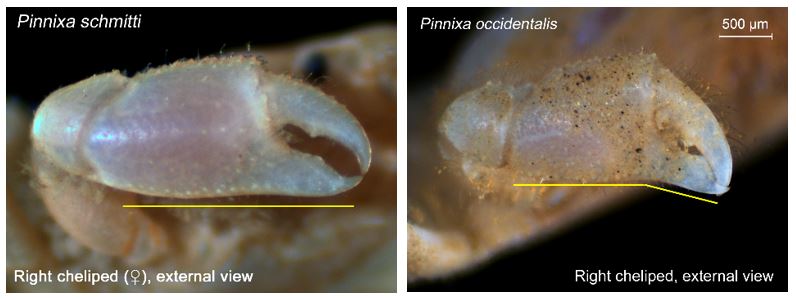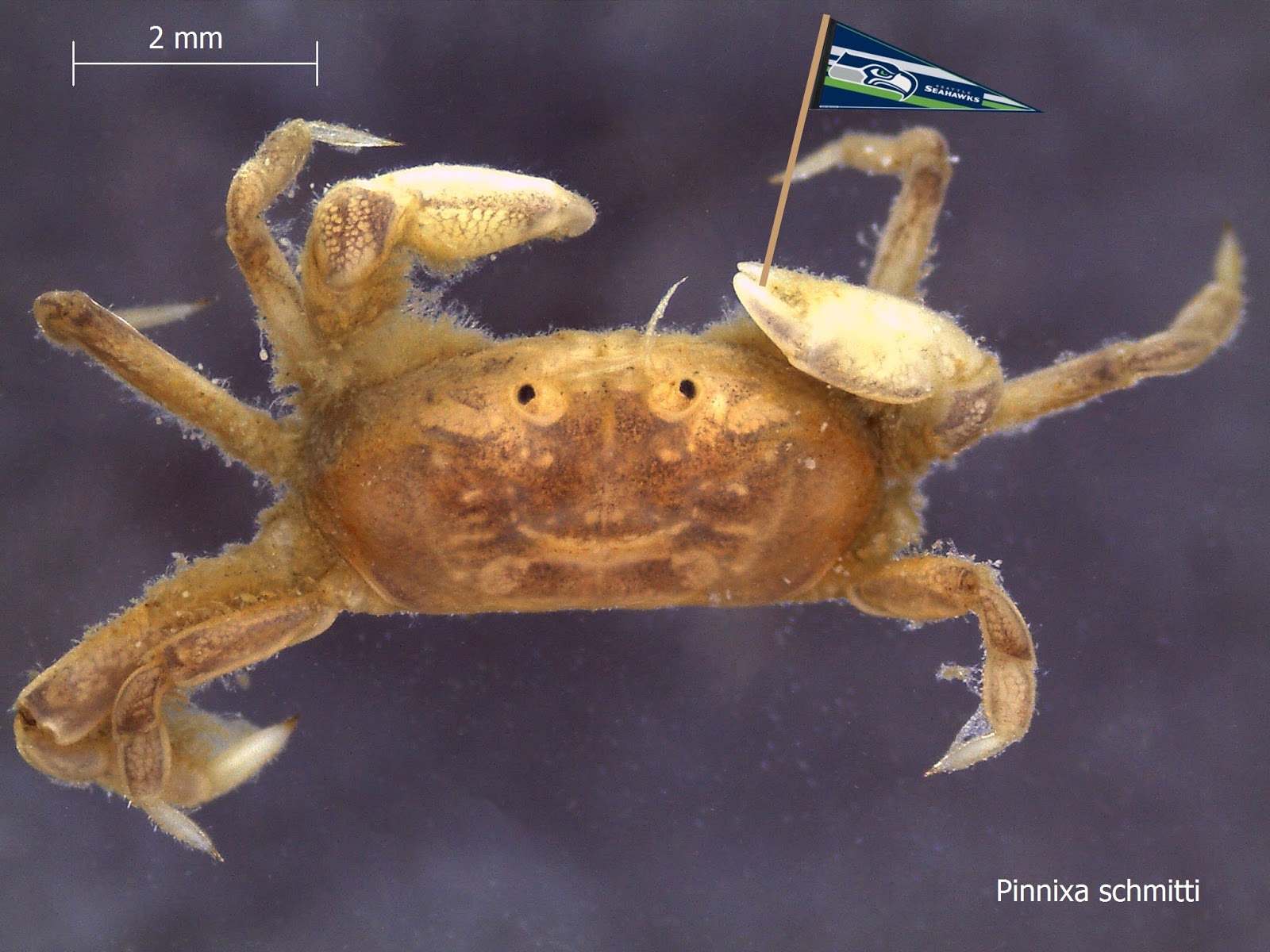Imagine yourself in a nice restaurant with a delicious-looking batch of steamed oysters in front of you. You insert your knife, pop open the shell, and right before you devour your prize, you discover that your oyster has a tiny crab as a houseguest! Male Fabia subquadrata, a species of pea crab found in Puget Sound.
Eat your peas
These little stowaways are called pea crabs, so named because many of them are small (most are less than a cm wide) and round. In the southeastern US, pea crabs are a common sight inside oysters, even considered by some to be a delicacy. This is a sight you won’t often see on the west coast, although plenty of pea crabs are found here. Scientists hypothesize that cold water temperatures or the way shellfish are grown on the west coast might play a role in controlling the number of oysters inhabited by crabs.
Hostess with the mostest
The most common Puget Sound pea crab, Pinnixa schmitti, likes to hang out in the burrows of ghost shrimp and echiurans (spoon worms), where it feeds on detritus and leftovers from its host. Many pea crabs can also filter feed if needed, but why pass up a free meal?
Two (or more) peas in a pod
Wearing out your welcome
These types of relationships are symbiotic, or an association between two organisms. In the case of pea crabs, many of them are not well understood. In most cases, the symbiosis seems to be commensal; that is, one animal (the crab) benefits from the shelter and food provided by its host, and the host is not affected one way or another by the crab’s tenancy. Fabia subquadrata inside the mussel Mytilus sp. Photo courtesy of Aaron Baldwin, Alaska Department of Fish and Game
In some cases, however, it appears that pea crabs do have a harmful effect on their hosts in a form of unintentional parasitism. Fabia subquadrata, the grooved mussel crab, lives the majority of its life inside a mussel or other bivalve, only leaving its host to find a mate. The female then re-enters the host and produces an egg mass that is almost the size of her body.
Over time, the presence of this sharp-clawed foreign object is thought to erode the gills of the mussel. Eventually the crab larvae will hatch out, each finding a mussel of its own to squat in.
Rule of thumb
Identifying pea crabs can be tricky because they are so small, and they often don’t have a lot of distinct features to examine. Some of the more reliable characters that taxonomists use to determine the species are the shape of the carapace (shell), the size of the walking legs, and the shape and dentition of the chelipeds (claws).
The chelipeds of Pinnixa schmitti
Peas and love
P. schmitti male
Critter of the Month
Our benthic taxonomists, Dany and Angela, are scientists who identify and count the benthic (sediment-dwelling) organisms in our samples as part of our Marine Sediment Monitoring Program. We track the numbers and types of species we see in order to understand the health of Puget Sound and detect changes over time.
Pinnixa schmitti, the most common Puget Sound pea crab.








